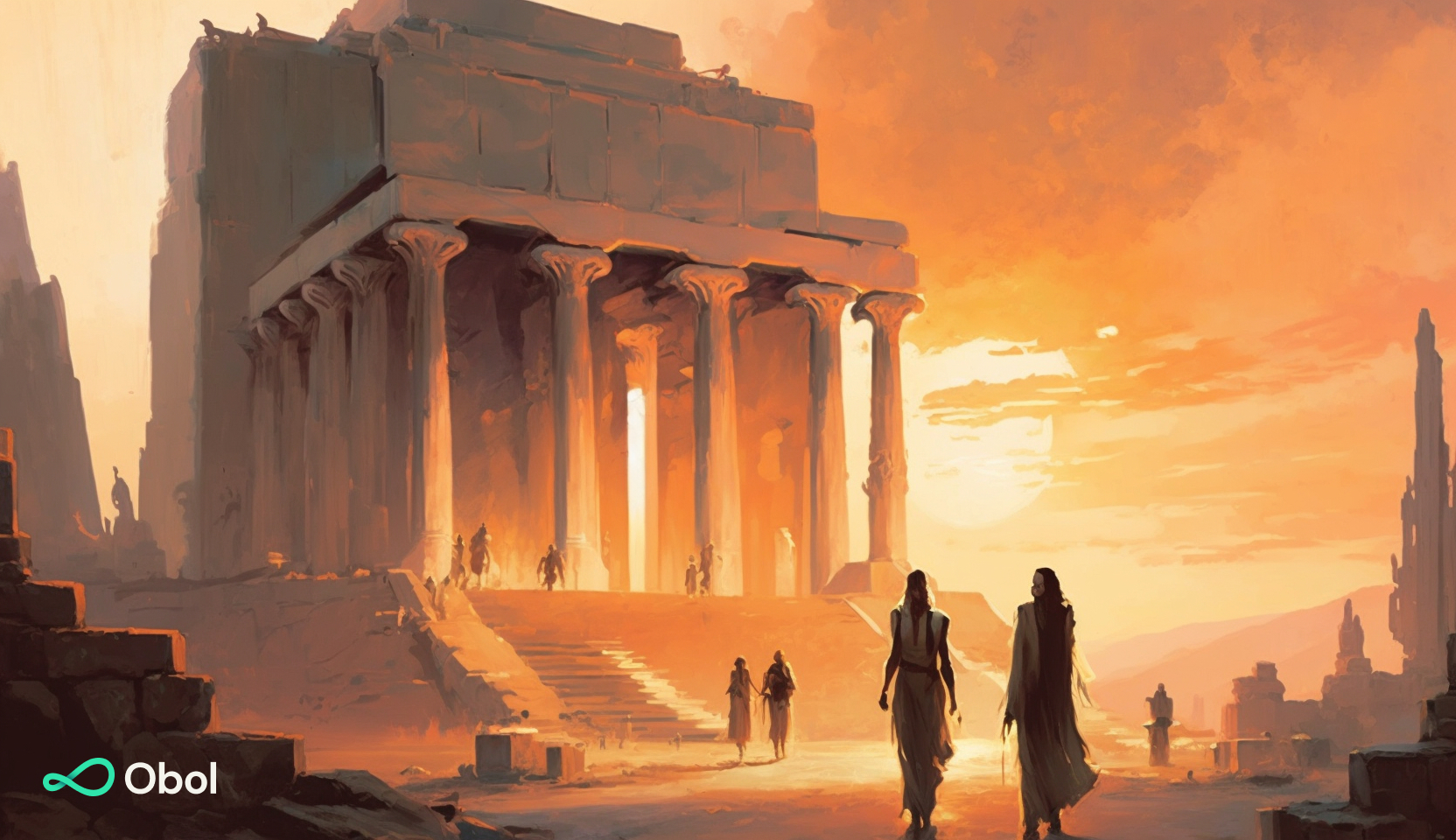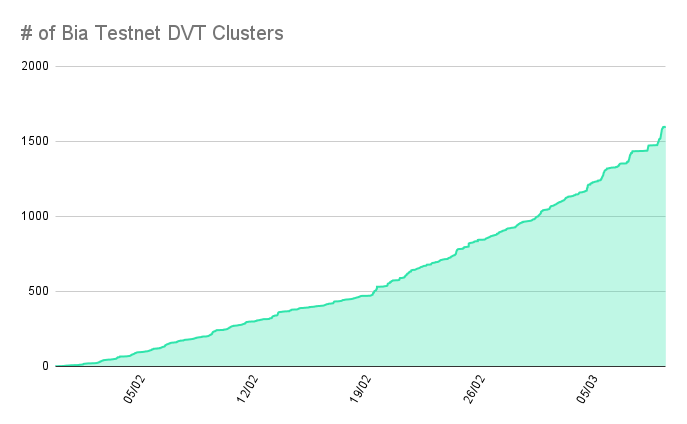The Bia Testing Program: Claiming Rewards, Exiting & What’s Next

After 1600+ distributed validator clusters run by 9000+ nodes around the world and 60+ organizations, we are ready to start winding down the Bia Testing Program, gathering learnings, and looking forward to what’s next.
When we closed out Athena, our first testing program 6+ months ago, we led with a huge THANK YOU to our community for supporting us in our testing adefforts. We were overwhelmed by the incredible engagement and results from the testnet, and amazingly excited about the road ahead.

Now, as we near the end of the Bia testing program, we are left feeling even more encouraged about the enthusiasm the community has for DVT and the value it can provide for Ethereum. In the ~60 days since we launched the Bia testing program, we have seen 1600+ distributed validator clusters registered, consisting of 9000+ nodes.
We also saw participation from people around the world showing enthusiasm for becoming validators and helping to secure the future of Ethereum.
For those that are participating in Bia, we wanted to say a big THANK YOU! We have never felt more confident as we move towards bringing DVT to Mainnet Ethereum.
We have now closed any new cluster formation and we wanted to give you an update on how to start winding down your Bia clusters, and what’s in store.
Running Bia Clusters for 30 Days
Many of you running clusters are wondering how you can qualify for the Obol Network Credential for running your cluster for 30 Days. We will be checking to see if your cluster has published at least 50% of the assigned attestations over the suggested period of 30 days between Feb 1st and April 15th. This means that if your cluster published >3375 successful attestations you are eligible, irrespective of how long your cluster ran. This will be verified automatically without requiring you to fill out a form to qualify, and we will make an announcement when the credential is ready to be claimed.
Claiming Validator Rewards
With withdrawal enabled on Goerli, you’ll notice that rewards are getting swept on a regular basis (see more info on how withdrawals work here). One of the new product features we wanted to get in front of users in time for Bia was being able to divide a validator’s reward using non-custodial, immutable splitter contracts deployed through the DV Launchpad. This entails deploying two smart contracts, a waterfall contract; that enables the first 32 ETH to flow through it to be claimed by the principal recipient, and a splitter contract, that receives everything above 32 ETH (the rewards), for splitting as configured by the cluster creator at deployment.
We are excited to announce that you can access the Claiming Interface to start claiming rewards from the splitter contract by following your DV Launchpad link used throughout the process of setting up your cluster:
https://bia.launchpad.obol.tech/dv?configHash=[config_hash]
Your config_hash can be found in the cluster-lock.json file inside your .charon folder if you need it. Check this video if you need help with claiming.
[NOTICE] Misconfiguration of The Reward Splitter Contract
Due to a miscommunication on our side, we configured both the withdrawal_address and fee_recipient of Bia distributed validators to exit to the splitter address which resulted in the principal (32 GoerliETH) being split based on what was specified in the splitter contract, not just the rewards (anything in excess of 32 GoerliETH).
Due to this issue, when you start claiming rewards, you will find that most operators end up receiving a larger share of GoerliETH than they should (as they are getting a share of the principal), while the principal recipient address referenced during setup will get less than the 32 GoerliETH it should get back when the validator exits.
We take full responsibility for introducing this misconfiguration, and we have taken steps to ensure it doesn't happen again. This is also why these testing efforts are so important: to ensure any issues are found and corrected before mainnet.
To rectify this, we refunded the GoerliETH difference to all addresses referenced as principal recipient in their cluster definition through a one-off payment.
Exiting A Validator
Besides claiming rewards, a voluntary exit is when a validator chooses to stop performing its duties, and exits the beacon chain permanently. When that process is complete, the 32 GoerliETH (or less if penalties were higher than rewards) deposit is released from the beacon chain.
To voluntarily exit, the validator must continue performing its validator duties until successfully exited to avoid penalties. We ask that you be good stewards of Ethereum testnets by properly exiting your validator instead of simply shutting down the nodes.
A threshold of operators will need to perform this step for the exit to be successful.
Please note that if a charon client restarts after the exit command is run but before the threshold is reached, it will lose the partial exits it has stored. If all charon clients restart before the required threshold of exit messages is received, operators will have to rebroadcast the exit messages.
You can follow the step-by-step instructions to exit in our docs page here.
Upon successful broadcasting of signed voluntary exit messages from a threshold number of operators, the exit epoch and withdrawable epoch values are calculated. These values determine exactly when the validator will no longer be required to be online performing validation, and when the validator is eligible for a full withdrawal respectively via our Claiming Interface mentioned above. This means there is typically a delay of at least 27hrs between exit and being able to claim.
What’s Next
We are making great progress on our Roadmap to Mainnet. With Bia winding down, we are full steam ahead into our Mainnet Alpha Launch while planning our next testing effort, the Circe Attack Net.
At the same time, we will continue to bring different programs and ways to contribute via our Obol Ambassador Program. There will be many more exciting community updates to come! Stay tuned.

